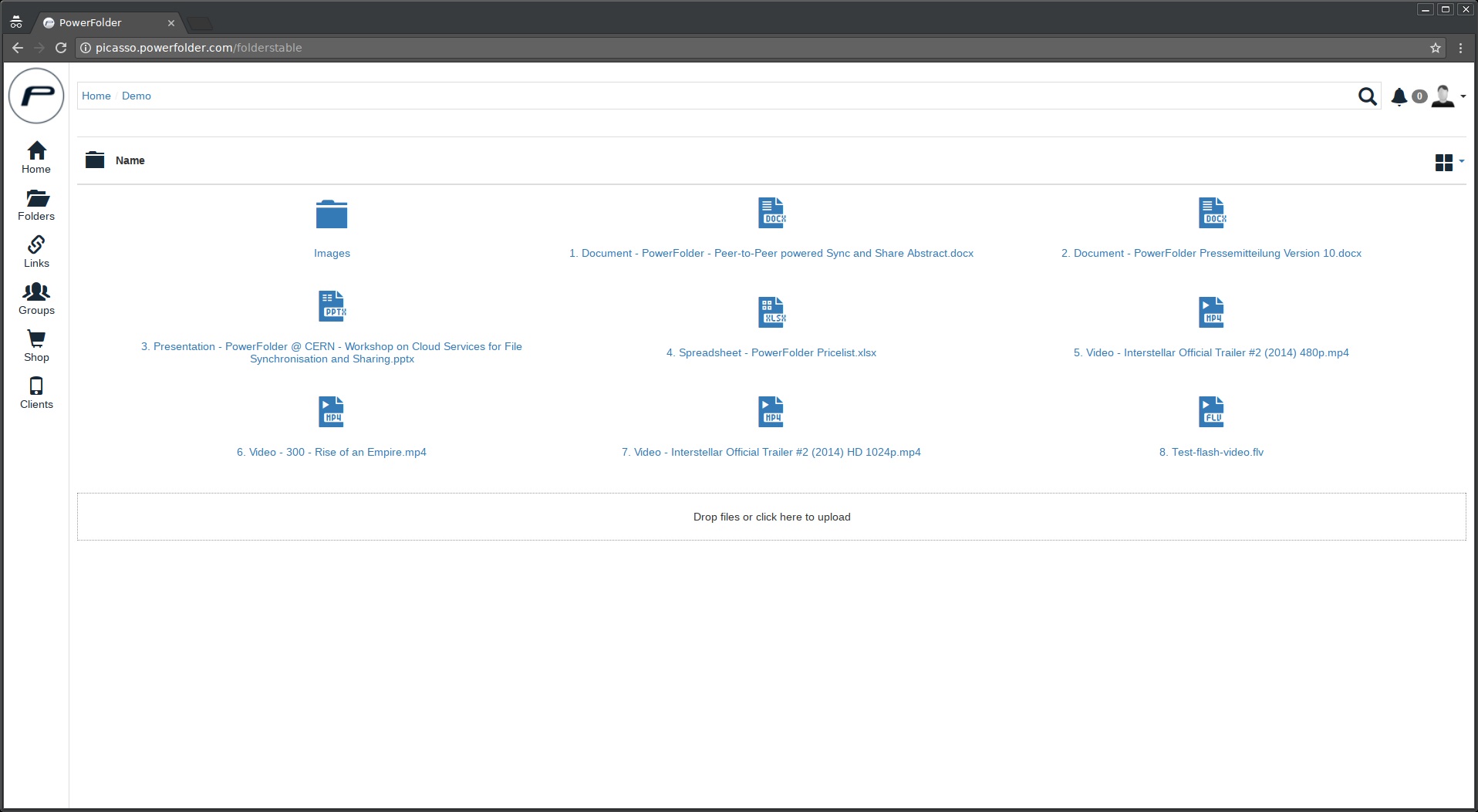
In 2015, the network of universities working with PowerFolder was extended to Bavaria. In addition, the distribution network had also gained important pillars overseas: a partnership was agreed with the US cloud specialist O4IT (Miami), creating a close and direct connection for North American user companies. The roll-out of the “bw Sync & Share” in Baden-Württemberg, new cooperation with companies such as the biotechnology company KWS Saat, Europe’s largest independent music company Edel and the TÜV Nord belonging DMT GmbH (raw material exploration) were among other things on the agenda for PowerFolder in 2014. But there was also plenty of time left for more: the German Cancer Research Center, the Helmholtz Center for Infection Research and the German Institute for International Educational Research, all research institutions of international considerable renown, were welcomed as customers in that year. The online storage service “bw Sync & Share”, which was launched one year later, providing a highly efficient and secure cloud for the synchronising and sharing documents for around 350,000 students and 100,000 employees of all of the higher education institutions in the south-western German federal state of Baden-Württemberg. After a month-long selection process, PowerFolder prevailed against well-known competitors to be awarded the contract for the largest German university cloud by the German federal state of Baden-Württemberg and the Karlsruhe Institute of Technology (KIT). To round the accomplishments of the year off, PowerFolder welcomed MEWA Textilservice, the world market leader in textile management, as a user and client.Ģ013 saw crucial steps being taken. 2012 also saw PowerFolder focus more on partnering with distributors and other cloud service providers who offer and use PowerFolder, creating an even greater synergetic marketing network. Among the many major international customers joining PowerFolder’s client list in that year was stock market listed sensor specialist Measurement Specialties, NASA’s and ESA’s supplier, which also produces for the vehicle, defence and medical device industries. The successful developments continued in 2012. In particular, PowerFolder was delighted to gain ALPS Electric Europe, a subsidiary of the Japanese Nikkei 225 electronics group Alps Denki, as a new customer in 2011. With 360 companies represented there, Düsseldorf has the third largest Japanese community after London and Paris and is an important centre of Japanese economic activity. The company grew fast and it was the move to new, larger premises in the neighbouring district of Lörick – right in the heart of Düsseldorf “Japan Town”. In addition to Luxembourg Schools, which continued to rely on PowerFolder, the GWDG, the “Gesellschaft für wissenschaftliche Datenverarbeitung mbH Göttingen” (a joint-institution founded by the Georg-August-Universität Göttingen and the Max Planck Society) also created their own in-house cloud using the PowerFolder software. In 2011, PowerFolder was able to win more and more customers from the education sector. During this year, PowerFolder began to focus on German SMEs – and on customers from the IT and mechanical engineering industries, in particular. The “Leetspeak” spelling of the name serving a reminder of the founder’s computer gaming past. One year later, the formal founding of the company, “dal33t UG”, took place. Even in those early days, Bernhard Rutkowsky, now responsible for marketing, support and web development, was already on board. The first customers in 2009 included the French Fortune 500 company Bolloré and the “Internet Corporation for Assigned Names and Numbers” – better known by the abbreviation ICANN.


It all started with humble beginnings – a small apartment in Dusseldorf, although the motto was “Think Big”. With a degree and a completed, functioning product in the bag, to boot, Christian Sprajc took the road to self-employment with PowerFolder.
0 0 report fake powerfolder software#
And, having already thought about it all in a practical and pragmatic way, he also made the software project his dissertation topic – killing two birds with one stone. After a 40-hour coding marathon, the first prototype was ready. As the right program for the task did not exist at the time, today’s PowerFolder CEO decided to write it himself. While studying business information technology, PowerFolder inventor Christian Sprajc wanted to easily exchange study documents with his fellow students, but without having to awkwardly send them backwards and forwards by email. Many great inventions have been born out of necessity.
0 0 report fake powerfolder professional#
PowerFolder – the way from the start-up to the professional class


 0 kommentar(er)
0 kommentar(er)
